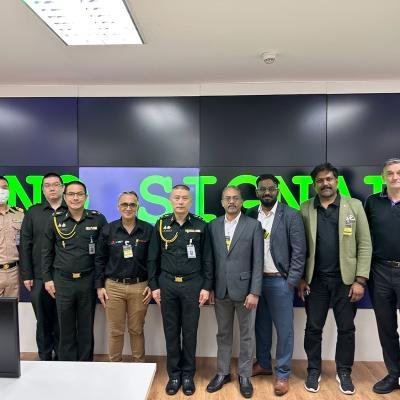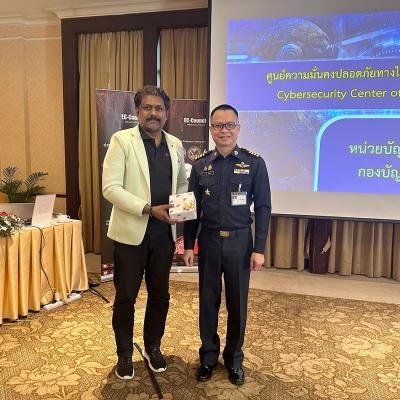SIEM acts as a sentinel in the digital realm, vigilant and watchful, ensuring the safety and integrity of our interconnected world
digiWATCH

SIEM
Security Information and Event Management
Product Overview
A product overview highlights the key features, benefits, and purpose of a product, providing potential customers with a quick understanding about the product.
DigiWATCH is a comprehensive security platform that combines the power of Unified Extended Detection and Response (XDR) and Security Information and Event Management (SIEM) to deliver robust protection for digital environments. It is a go-to solution for organizations looking to enhance their digital security by collecting, monitoring, and analysing machine data from various sources, including physical, virtual, and cloud environments.
Unified XDR and SIEM Protection
Importance of SIEM Solution
SIEM (Security Information and Event Management) solutions are crucial for organizations to proactively monitor, detect, and respond to security threats, enhancing their cybersecurity posture and data protection.
Threat Detection and Monitoring: Real-time monitoring and analysis of security events to identify and respond to potential threats proactively.
Compliance Management: Ensuring adherence to regulatory standards by providing comprehensive security event logs for auditing purposes.
Incident Response and Forensics: Facilitating effective incident response and detailed forensic investigations to mitigate potential damages.
Infrastructure Targeted in Online Attacks
Targeted Infrastructure | Percentage of Attacks |
|---|---|
Endpoints and Workstations | Over 60% |
Cloud Services and Applications | 24% |
Network Devices and Servers | Nearly 30% |
Key Features
Real-time Log Analysis
File Integrity Monitoring
User-Friendly Interface
Cross-Platform Support
Vulnerability Detection
SIEM
Intrusion Detection
Compliance Monitoring
Agent Functionalities
Architecture Overview
Indexer
- Highly scalable, full-text search, and analytics engine for data indexing and storage.
- Efficiently manages and stores critical security data.
- Facilitates fast and comprehensive search capabilities.
- Supported OS: 64-bit Linux.
Server
- Central component analyzing data from Agents.
- Responsible for triggering alerts and managing agent configurations.
- Serves as the nerve center for threat detection and response.
- Ensures seamless communication and efficient data analysis.
- Supported OS: 64-bit Linux.
Agent
- Multi-platform agent running on selected endpoints.
- Communicates securely with the Server.
- Operates efficiently across diverse platforms.
- Collects and transmits security data in real-time.
- Ensures comprehensive threat monitoring and analysis.
- Requires an average of 35MB RAM.
- Supported on multiple platforms such as Linux, Windows, macOS, Solaris, AIX, and HP-UX.
Dashboard
- Flexible web interface for visualizing and analyzing security data.
- Provides out-of-the-box dashboards for monitoring security events and key metrics.
- Empowers users with actionable insights.
- Supported OS: 64-bit Linux.
Operating System
Deployment Flexibility
Supported Integrations
System Requirements
Requirement Type | CPU | RAM | Storage | Network | Size Range |
|---|---|---|---|---|---|
Minimum | Dual-core 2.4 GHz | 4 GB | 100 GB HDD | 1 Gbps Ethernet | Up to 100 employees |
Preferred | Quad-core 3.0 GHz | 8 GB | 250 GB SSD | 10 Gbps Ethernet | 100 to 500 employees |
Optimal | Octa-core 3.5 GHz | 16 GB | 500 GB SSD | 20 Gbps Ethernet | 500+ employees |
Cloud Security
Monitoring AWS
Monitoring GCP services
Monitoring Microsoft Azure
Monitoring Office 365
Monitoring GitHub
Installation Methods
Use Cases
Endpoint Security
- Scenario: Protecting endpoints from cyber threats.
- Remediation: Implementing antivirus and firewall protection for company laptops and devices.
Threat Intelligence
- Scenario: Leveraging analytics and threat intelligence for proactive threat management.
- Remediation: Analyzing global cyber threat data to anticipate potential security vulnerabilities
Security Operations
- Scenario: Providing a centralized platform for efficient security operations, including real-time threat detection
- Remediation: Using a SIEM system for comprehensive threat monitoring
Cloud Security
- Scenario: Ensuring security for cloud-based infrastructures and monitoring virtual machines and cloud instances
- Remediation: Implementing security protocols for AWS instances to prevent unauthorized access and data breaches.
Configuration Assessment
- Scenario: Conducting regular assessments to ensure compliance with security standards.
- Remediation: Performing security audits to ensure adherence to CIS hardening guidelines.
Threat Hunting
- Scenario: Proactively searching for potential security threats within the network and taking pre-emptive measures.
- Remediation: Analyzing network traffic patterns to identify anomalies indicating a potential cyberattack.
Incident Response
- Scenario: Automating incident response processes to mitigate security incidents.
- Remediation: Implementing automated protocols to neutralize a ransomware attack on the company network.
Container Security
- Scenario: Providing security for containerized environments through integration with Docker and Kubernetes
- Remediation: Monitoring Docker containers for unauthorized access and vulnerabilities.
Malware Detection
- Scenario: Identifying and mitigating malware presence to prevent data breaches.
- Remediation: Using advanced malware detection tools to remove a sophisticated malware variant.
Log Data Analysis
- Scenario: Analyzing log data to identify potential security risks and monitor network activities.
- Remediation: Parsing server logs to identify unauthorized access attempts and potential breaches.
Regulatory Compliance
- Scenario: Ensuring adherence to regulatory compliance standards through reporting and monitoring.
- Remediation: Generating regular compliance reports to demonstrate adherence to GDPR data protection regulations.
File Integrity Monitoring
- Scenario: Monitoring and detecting unauthorized changes to critical system files.
- Remediation: Setting up alerts for unauthorized modifications to critical system configuration files.
Vulnerability Detection
- Scenario: Identifying and addressing system vulnerabilities
- Remediation: Running vulnerability scans to identify and patch potential security loopholes in the company network.
Top SIEM Comparisons with digiWATCH
Feature | digiWATCH | Splunk Enterprise | IBM QRadar | LogRhythm | McAfee Enterprise | SolarWinds Security |
|---|---|---|---|---|---|---|
Cost-effective | ||||||
User-Friendly Interface | ||||||
Advanced Threat Detection | ||||||
Real-Time Monitoring | ||||||
Scalability | ||||||
Customizable Dashboards | ||||||
AI-Driven Analytics | ||||||
Compliance Reporting | ||||||
Integration Capabilities | ||||||
Efficient Forensic Analysis | ||||||
Automated Incident Responses | ||||||
Unified Threat View | ||||||
Compliance Management |

















